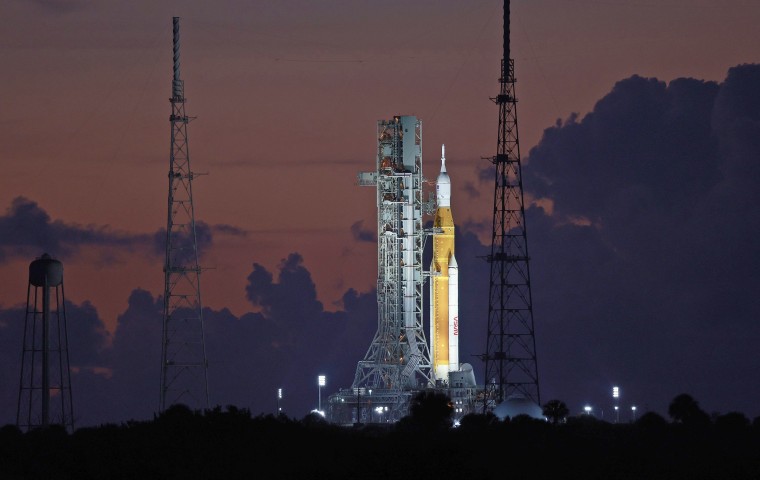NASA will try again to launch its next-generation megarocket and space capsule to the moon later this month, with a new attempt set for Sept. 27.
Agency officials confirmed Monday that repairs are still underway to address hydrogen fuel leaks in the uncrewed Space Launch System rocket that thwarted two previous liftoff attempts. Teams are expected to conduct a key test of the fueling process Sept. 21, in the hopes of demonstrating that the leaks have been plugged.
If successful, NASA will aim to launch the moon-bound mission, known as Artemis I, within a 70-minute window that opens at 11:37 a.m. ET, Sept. 27.
The long-awaited debut of the Space Launch System rocket and Orion capsule features a nearly six-week test flight to orbit the moon. The expedition is designed to assess the performance of the rocket and capsule before NASA sends astronauts back to the lunar surface.
Agency officials said they are also reviewing a potential backup launch opportunity Oct. 2. Beyond that, teams have to navigate around a planned launch of SpaceX's Falcon 9 rocket Oct. 3 that will take two NASA astronauts, one Japanese astronaut and one Russian cosmonaut to the International Space Station.
"Teams are working the upcoming commercial crew launch in parallel to the Artemis I planning and both launch schedules will continue to be assessed over the coming weeks," the agency said in a blog post.
NASA's two previous tries to get the Artemis I mission off the ground — once Aug. 29 and another Sept. 3 — were called off after issues arose as the rocket was being loaded with propellant.
NASA Administrator Bill Nelson has said that safety remains the top priority, particularly because the SLS rocket and Orion capsule will eventually fly with astronauts onboard.
As part of the Artemis program, NASA envisions regular missions to the moon to establish a base camp on the lunar surface, before the agency eventually ventures to Mars.
After Artemis I, the agency is planning a subsequent test flight that will launch four astronauts in the Orion spacecraft on an expedition around the moon. That journey, known as Artemis II, could take place in 2024. If all goes well, NASA could send a crew to the lunar surface as early as 2025. The last time humans walked on the moon was in 1972, during NASA's Apollo program.

